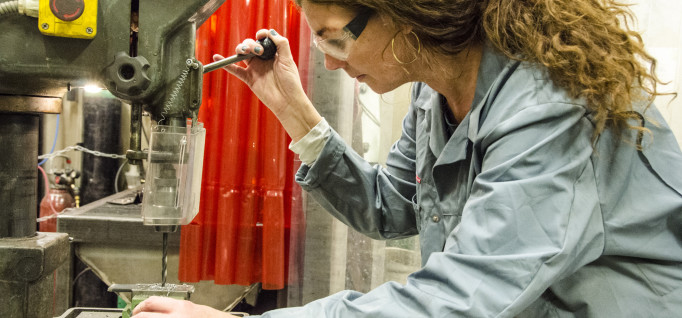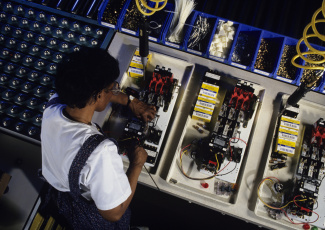Minn. Colleges, Companies Team Up to Fill Skills Gaps
By Dennis Pierce
July 2, 2015
As the workforce ages, Graco and other manufacturers look to local colleges for the next generation of workers.
In late May, when U.S. Labor Secretary Thomas Perez praised Minneapolis Community and Technical College (MCTC) for its collaboration with local manufacturer Graco Inc., the event brought national recognition to a long-standing partnership that is helping to replenish an aging workforce.
Graco employs about 1,500 workers in Minneapolis and other locations to make fluid-handling equipment, such as tanks, pumps and spray guns. The average age of employees is 48, so the company relies on MCTC and other area colleges to help recruit and train a new generation of machinists for jobs that reportedly start at up to $20 an hour, plus stock options.
Perez saluted Graco’s partnerships with MCTC and other schools during a May 26 visit to Minnesota.
“There are multiple pathways to the middle class, and $20 an hour plus benefits plus stock options for a 21- or 22-year-old is a pretty good start on achieving the middle class,” he told the Minneapolis Star-Tribune.
MCTC has been working closely with Graco since the mid-1990s to supply interns and technical-degree graduates for the company, says Gail O’Kane, vice president of academic affairs for the college.
Graco executives “exhibit a strong belief in being a partner to solve the workforce development challenge,” O’Kane says.
In addition to serving on MCTC’s advisory board and helping to make sure the college’s manufacturing curriculum is up to date, Graco has invested hundreds of thousands of dollars in equipment, scholarships and other services for the college. For instance, the company recently purchased a new lathe for MCTC, a donation valued at more than $85,000.
Graco’s generosity is supported by a matching state grant intended to spur manufacturing. The state will match every dollar a company invests to support job-skills training.
As a result of this matching grant program, Graco executives “know they’re going to get double their investment,” O’Kane says.
Building ties in local manufacturing
MCTC is also part of a consortium of Minnesota community colleges that received a $15 million Trade Adjustment Assistance Community College and Career Training grant from the U.S. Department of Labor to strengthen job-skills training programs. About $1 million of that funding will support MCTC’s manufacturing initiatives.
Graco is not the only local manufacturer with close ties to MCTC. The college has also developed relationships with Kurt Manufacturing, another Minneapolis-based company.
In addition to offering curriculum support, these industry partners help MCTC students prepare for postschool employment by teaching them how to develop resumes and conducting mock interviews.
O’Kane says these partnerships are the result of “close personal relationships that are nurtured and shared.” The college places high importance on fostering such relationships with local manufacturers, and one of its keys to success has been using multiple people to connect with employers — including Mike Christenson, associate vice president of strategic partnerships; Reede Webster, dean of workforce development; and Kim Munson, an instructor in MCTC’s machine tool program.
“It’s not just one person who is involved in that relationship-building. We have multiple people who connect with employers, so as things transition over time, we have a relationship that persists,” O’Kane explains.
Using multiple people to nurture industry partnerships not only ensures that these relationships withstand changes in personnel; it also helps MCTC leaders understand the needs of employers and then “translate what we’re hearing into program changes that serve students well,” O’Kane says.
O’Kane says employers often tell the college that they want workers who are problem-solvers. As a result, MCTC’s Computerized Numerical Controls program — a 60-credit associate degree program that prepares students to be CNC machinists — teaches students not just about machine programming but also about metalworking basics.
“That’s so that, when things break, students can really understand: Was it something with the metal? Something with the machine?” O’Kane says. “While we could skip that skill set and accelerate them on to the computerized part of manufacturing, we believe that we have to teach the basics as well.”
“It’s not just pressing buttons; it’s understanding at a very basic level what’s happening, so that when students are on the shop floor and unexpected things happen, they know how to solve them,” O’Kane concludes.









